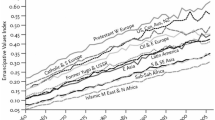Abstract
Seinfeld (1989–1998) and it’s co-creator’s Curb Your Enthusiasm (2000–present), are each considered groundbreaking television. Critics regard their humor and intellectual comedy as Twain-like and creative. While both shows have been criticized for their character’s indifference and apolitical attitude, the programs resonate with those in society who more subtly consider law and politics. This project argues that Seinfeld and Curb present a unique theory of justice. These two shows constitute a common and current image of what is just in society. While critics have argued that Seinfeld and Curb are not shows about nothing, I argue that these comedians offer us a legal philosophy. For those who view these characters as merely “self-absorbed, superficial, and immature,” I posit that they represent the obscure area between what John Locke termed “the state of nature” and what legal scholars call “legal culture.” I propose that these sitcoms demonstrate a way of speaking about law that provides a constitutive theory of law and justice.
Similar content being viewed by others
Notes
The idea for this project had its genesis after first viewing and understanding Seinfeld and subsequently Curb. I am indebted to various people who encouraged this study and contributed to its substance. They include John Brigham, Jessica Burkett, Alan Gaitenby, Christine Harrington, Joshua Sayko, and the work of Stephen Gencarella Olbrys, specifically Seinfeld’s Democratic Vistas, which is the structural basis of this paper.
“The Chinese Restaurant” episode is considered the first classic episode of the series. As Seinfeld and David have described in interviews, NBC executives objected to the episode due to its lack of storyline. David threatened to quit the network if major changes to the script were demanded. The episode aired near the end of season two.
Interestingly, during this episode, Kramer and Elaine look to a neutral third party to resolve the issue of who now owns the bike. They turn to Newman, Jerry’s neighbor. Newman, like Solomon in The Bible, listens to Kramer and Elaine. He then states that the bike will be cut in half so each of them can have some of it. Kramer objects and asks that Elaine take the bike. Newman then gives it to Kramer knowing that only the rightful owner of the bike would rather it be with someone else than destroyed. This classic biblical tale exemplifies the importance of justice in Seinfeld.
References
Carlin, George. 2002. On comedy. Laugh.com.
Chapman, Antony J., and Hugh C. Foot. 1976. Humor and laughter: Theory, research, and applications. NY: Wiley.
David, Larry. 2000–2009. Curb Your Enthusiasm. HBO, Santa Monica: CA.
David, Larry and Jerry Seinfeld. 1989–1998. Seinfeld. NBC Universal. Burbank: CA.
Epperson, Robert A. 2000. “Seinfeld and the moral life.” In Seinfeld and philosophy: A book about everything and nothing, ed. William Irwin, 163–174. Chicago: Open Court.
Ewick, Patricia, and Susan Silbey. 1998. The commonplace of law. Chicago: Chicago University Press.
Ewin, R.E. 2003. Hobbes on laughter. The Philosophical Quarterly 51: 29–40.
Galanter, Marc. 2002. Lecture: The Uri and Catherine Bauer Memorial Lecture: Changing legal consciousness in America: The view from the Joke Corpus. Cardozo Law Review 23: 2223–2240.
Galanter, Marc. 2005. Lowering the bar; Lower jokes and legal culture. Madison: University of Wisconsin Press.
Gencarella Olbrys, Stephen. 2005. Seinfeld’s democratic vistas. Critical Studies in Media Communication 22(5): 390–408.
Gunster, Shane. 2005. All about nothing: Difference, affect, and Seinfeld. Television New Media 6: 200–233.
Hirsch, Irwin, and Cara Hirsch. 2000. Seinfeld’s humor noir: A look at our dark side. Journal of Popular Film and Television 28: 116–123.
Hurd, Robert. 2006. Taking Seinfeld seriously: Modernism in popular culture. New Literary History 37: 761–776.
Johnson, Carla. 1994. Luckless in New York: The Schlemiel and Schlimazl in Seinfeld. Journal of Popular Film and Television 22: 116–124.
http://www.jweekly.com/article/full/8208/critics-call-show-self-hating-was-seinfeld-good-for-jews/.
Lavery, David and Marc Leverette. 2006. “Rereading Seinfeld after Curb Your Enthusiasm.” In Seinfeld Master of Its Domain: Revisiting Television’s Greatest Sitcom, ed. David Lavery with Sara Lewis Dunne, pp. 203–219. New York: Continuum.
Little, Laura. 2009. Regulating funny: Humor and the law. Cornell Law Review 94: 1235–1292.
Limon, John. 2000. Stand-up comedy in theory, or abjection in America. Durham: Duke University Press.
Locke, John. 1690. Second Treatise on Civil Government.
http://www.metacritic.com/tv/shows/curbyourenthusiasmseason5.
Martin, Rod A. 2006. The psychology of humor: An integrative approach. New York: Academic Press.
Mills, Nicolaus. 1998. So long, Jerry Seinfeld. Dissent 45(89): 92.
Morreale, Joanne. 2000. Sitcoms say goodbye: The cultural spectacle of Seinfeld’s last episode. Journal of Popular Film and Television 28: 108–115.
Morris, Barbara S. 1999. Why is George so funny? Television comedy, trickster heroism, and cultural studies. The English Journal 88: 47–52.
http://www.popmatters.com/tv/reviews/c/curb-your-enthusiam.shtml.
Provine, Robert R. 2000. Laughter: A scientific investigation. Viking Adult.
Rapping, Elayne. 1995. The Seinfeld syndrome. The Progressive 59(9): 37–38.
Roeckelein, Jon. 2002. The psychology of humor: A reference guide and annotated bibliography. Westport: Greenwood Press.
TV Guide. 2002. 50 Greatest TV Shows of all time. OpenGate Capital.
Urban, Greg. 1991. A discourse-centered approach to culture: Native South American myths and rituals. Austin: University of Texas Press.
Wyman, Bill. 2002. “Seinfeld.” Retrieved from http://www.salon.com/ent/masterpiece/2002/01/07/seinfeld/index.html Retrieved September 1, 2004.
Author information
Authors and Affiliations
Corresponding author
Rights and permissions
About this article
Cite this article
Lorenz, A.R.S. The State of Nature and Laws of Seinfeld: Not That There’s Anything Wrong With That. Int J Semiot Law 27, 65–84 (2014). https://doi.org/10.1007/s11196-013-9322-0
Published:
Issue Date:
DOI: https://doi.org/10.1007/s11196-013-9322-0




